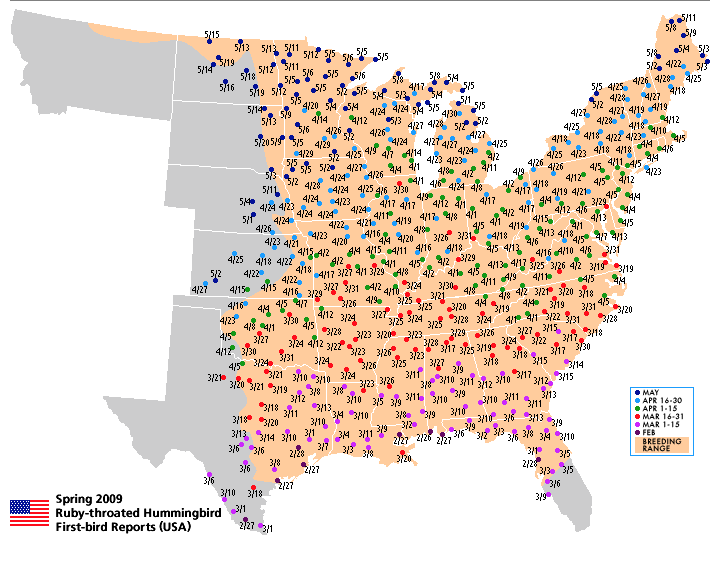


We typically track the spring hummingbird migration from late-January to mid-May of each year, with the help of our viewers as they submit their first hummingbird sightings in their areas. Food is non-existent over the open waters.įirst arrivals in the spring, usually males, can be seen in Texas, Louisiana and other sites along the Gulf Coast in late January to mid-March.Īs the spring progresses, sightings are reported further north, even into Canada. Strong cold fronts moving south over the Gulf of Mexico make flying difficult as the birds deal with headwinds and heavy rain, over long distances with no shelter. Stops along the way may be for a few minutes, or a few days at more favorable locations with abundant food supplies. The spring migration can be hard on the hummingbird population as they move north from their winter homes in southern Mexico and Central America. However those that make the 500 mile flight from Florida to the Yucatan do it in 18-22 hours non-stop, depending on wind conditions. Research indicates a hummingbird can travel as much as 23 miles in one day. They are also experts at using tail winds to help reach their destination faster and by consuming less energy and body fat. Flying low allows the birds to see, and stop at, food supplies along the way. Hummingbirds fly by day when nectar sources such as flowers are more abundant. Young hummingbirds must navigate without parental guidance. They fly alone, often on the same path they have flown earlier in their life, and fly low, just above tree tops or water. To support this high energy level, a hummingbird will typically gain 25-40% of their body weight before they start migration in order to make the long trek over land, and water. Making the Tripĭuring migration, a hummingbird's heart beats up to 1,260 times a minute, and its wings flap 15 to 80 times a second. Instinct also plays a role in making the decision to migrate. The Migration TriggersĪlthough there are differing views in the birding community as to what triggers the start of migration, it is generally thought that hummingbirds sense changes in daylight duration, and changes in the abundance of flowers, nectar and insects. Some, however, do not migrate, in areas like California and the upper Pacific coast. The first arrivals in spring are usually males. and western states as early as February, and to areas further north later in the spring. Many hummingbirds spend the winter in Central America or Mexico, and migrate north to their breeding grounds in the southern U.S. Rain makes Ruby-throats thirsty! Scene at our yard, September 8, 2020, approaching peak fall migration


 0 kommentar(er)
0 kommentar(er)
